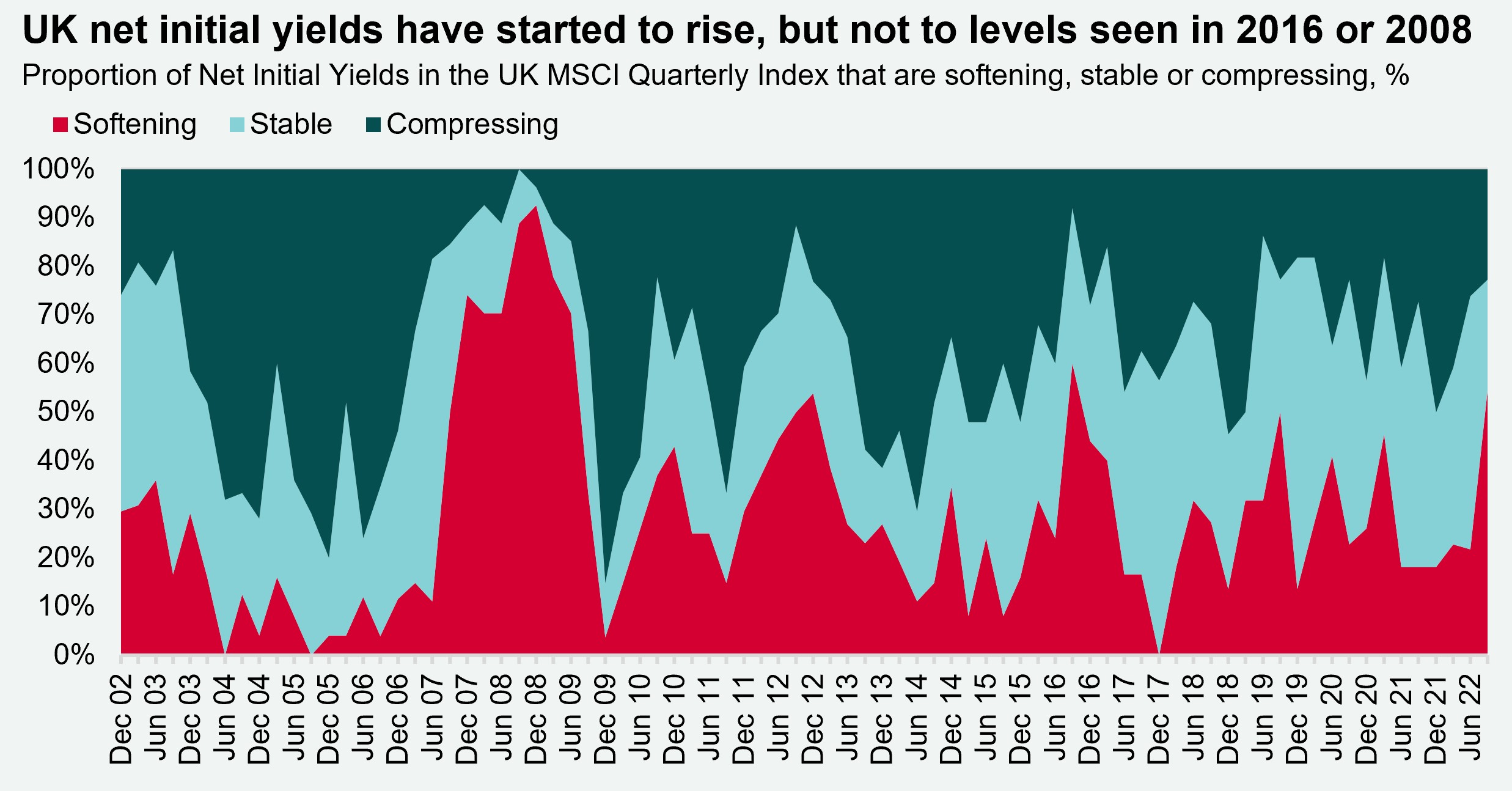Your Leading Indicators | Solvency II | Inflation | Energy Consumption
Discover key economic and financial metrics, and what to look out for in the week ahead.
2 minutes to read
Here we look at the leading indicators in the world of economics. Download the dashboard for in-depth analysis into commodities, trade, equities and more.
Will changes to the interpretation of Solvency II have implications for UK CRE?
Jeremy Hunt’s plan to reform how the UK interprets Solvency II, aims ‘to unlock tens of billions of pounds of investment into the real economy’. Reforms will likely involve the relaxation of the current matching adjustment (MA) rules, which will permit insurers to invest greater long-term capital to the UK economy. The risk margin will also be reduced, with a 65% reduction for long-term life insurance businesses and a 30% reduction for general insurance businesses. These interpretation changes could increase investment flexibility, which will broaden eligibility criteria on the matching adjustment. This could encourage investment in long-term productive assets with predictable cash flows. Here, UK commercial real estate may benefit due to its liability-matching characteristics.
Global inflationary pressures may have peaked
A moderation in factory gate prices, shipping rates and commodity prices from recent highs indicate that strong global inflationary pressures may have peaked. The UN FAO Food Price Index was just +1.9% y-y in October, compared to the +34.0% peak in March. Meanwhile, the UK’s main prices balance fell for the third consecutive month, which reaffirms that inflation may be close to its peak. Moderating activity should further ease capacity constraints, albeit, commodity prices remain sensitive and the looming ban on Russian oil will likely keep inflation in the UK and eurozone elevated. In the UK, worker shortages remain a persistent issue for firms, which could also have implications for inflation. Therefore, while indicators suggest we’re near peak wage growth, elevated inflation levels are likely to remain. The OBR forecast UK inflation to fall from 11.1% currently, to 7.4% next year.

Commercial real estate’s role in reducing emissions
Globally, the largest source of greenhouse gas emissions is energy consumption, and according to the World Economic Forum, 40% of this is consumed within buildings. Businesses have acknowledged the need to reduce the carbon footprint of the existing built environment, largely by reducing wasteful electricity consumption. Prop techs have started to target increasing efficiencies via commercial building management systems. This is important as the combined heating, ventilation, air conditioning and lighting systems in a typical office building account for roughly 70% of that building’s energy consumption. Targeting consumption efficiencies will be important, as the Autumn Statement set out a new ambition to reduce energy consumption from UK buildings and industry by 15% by 2030, which if achieved could provide a £28bn saving to the national energy bill.
Download the latest dashboard